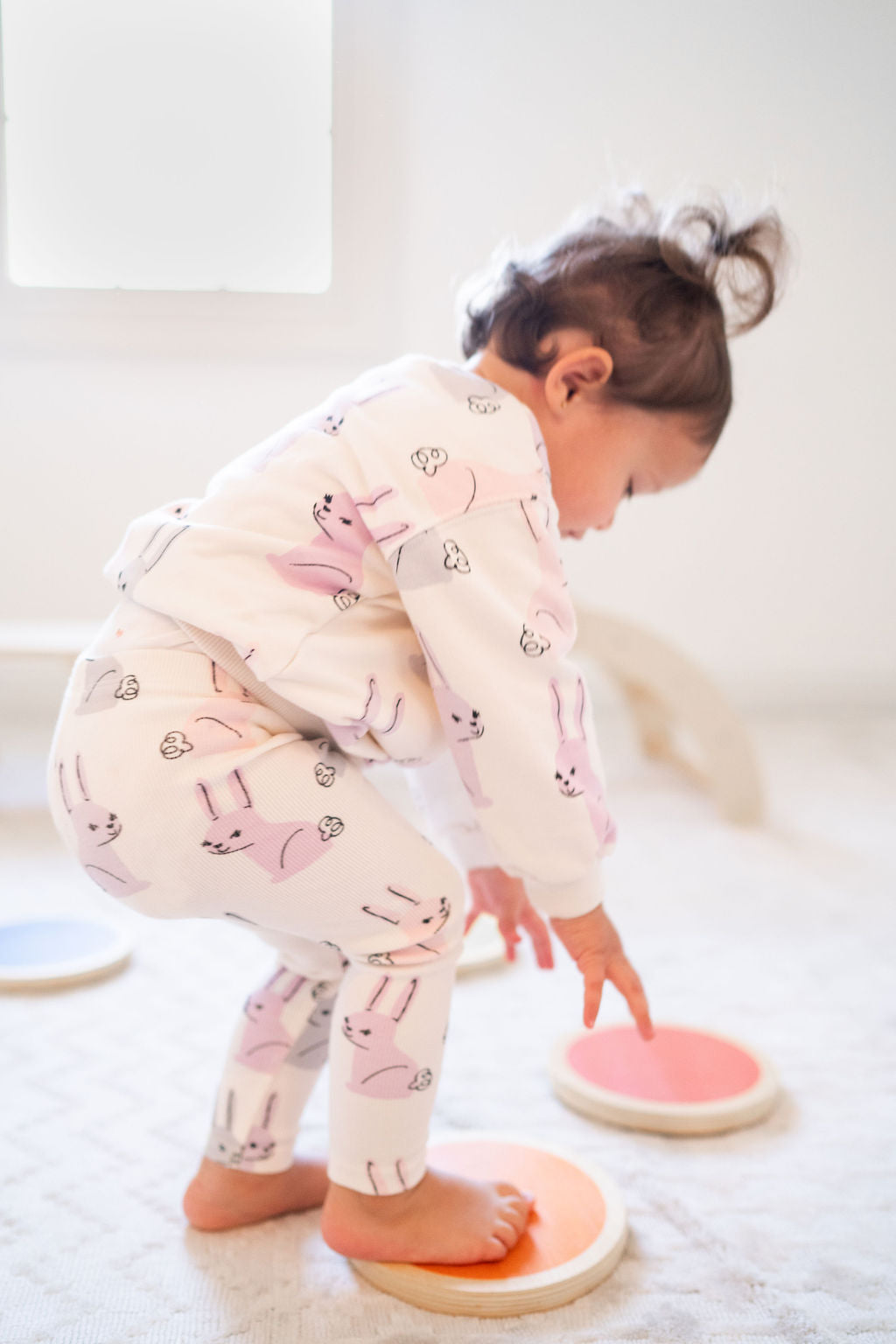Fun & Skill-Building Kids Stepping Stones – Balance Meets Imagination
Fun & Skill-Building Kids Stepping Stones – Balance Meets Imagination

For young children, movement isn’t just fun, it’s foundational. Every jump, hop, and wobble strengthens muscles, builds coordination, and fuels cognitive growth. That’s where kids stepping stones come into play. These colorful, durable play tools transform any room or yard into an imaginative adventure course that supports physical development and active learning.
Whether indoors on a rainy day or outside in the sunshine, stepping stones offer a versatile and engaging way for kids to explore movement, test their balance, and build confidence, one step at a time.
What Are Kids Stepping Stones?
Kids stepping stones are flat, textured platforms, usually made of foam, plastic, or rubber—that children can step, hop, or jump between. They’re designed to mimic natural stones while providing a safe, soft surface for balance play.
Arranged in a straight line, a circle, or a zig-zag, stepping stones invite open-ended play. Children can pretend they’re leaping across rivers, escaping lava, or navigating a magical trail—all while unknowingly building vital motor skills.
Popular Uses Include:
Indoor obstacle courses
Backyard balance trails
Preschool physical education
Montessori-style gross motor stations
Therapy or sensory rooms
Why Stepping Stones Are Great for Child Development
These simple platforms pack a big developmental punch. They help children refine their gross motor skills—the large muscle movements that support everyday activities like walking, climbing, and catching.
Key Benefits:
Balance Training: Kids learn to steady themselves while moving.
Coordination Skills: Moving between stones strengthens left-right brain connections.
Spatial Awareness: Navigating gaps teaches visual planning and distance judgment.
Confidence Boost: Mastering movement challenges builds self-esteem.
Social Play: Ideal for group games, turn-taking, and cooperative play.
For toddlers and preschoolers especially, stepping stones encourage active engagement instead of passive screen time. They offer a way to channel energy, practice control, and explore independence.
Features to Look for in High-Quality Stepping Stones
Not all stepping stones are created equal. Look for designs that are safe, durable, and age-appropriate. Many high-end options, like those from Poppyseed Play and similar natural play brands, focus on child-friendly materials and minimalist design to blend seamlessly into modern homes.
Ideal Features Include:
Non-slip bottoms: For safe use on hardwood, tile, or carpet
Textured surfaces: Enhances sensory input and foot grip
Stackable shapes: Easy to store or use creatively
Neutral or muted colors: Fit well with Montessori or minimalist aesthetics
Eco-conscious materials: BPA-free, phthalate-free, and recyclable
Indoor & Outdoor Fun, All Year Long
The versatility of kids stepping stones is one of their biggest perks. In the winter, they can be laid out in playrooms for obstacle courses and quiet solo games. When the weather warms up, they move outdoors for backyard races, picnic play, or playground prep.
Use them to:
Create a “lava path” across the room
Build a hopscotch-style course
Combine with balance beams or tunnels
Challenge older kids with spaced-out layouts
They’re also fantastic for multi-age households—toddlers can tiptoe across low stones while older siblings turn them into ninja training grounds or agility games.
How Poppyseed Play Does It Differently
Poppyseed Play, known for their aesthetic-forward baby gear, also offers products that promote movement and sensory development in toddlers and preschoolers. Their kids stepping stones are no exception, crafted with care, designed for balance, and styled to match calm, neutral spaces.
While most stepping stones on the market are bright and loud, Poppyseed Play offers tones that match modern home design, think soft sage, sand, or charcoal gray. They’re lightweight yet durable, stackable for tidy storage, and perfectly grippy for little feet.
Their focus on safety and simplicity makes them ideal for Montessori-inspired households or those following open-ended play principles.
Designed for Ages 18 Months and Up
While older toddlers thrive with stepping stones, many parents introduce them as early as 18 months, once their child is walking confidently. The key is to start with closer spacing and gradually increase difficulty.
Use with supervision for:
Early walking and balance support
Side-stepping practice to build hip strength
Turning and pausing between stones to boost control
They can also be used in physical therapy or occupational therapy settings where balance training is part of a child’s routine.
Creating a Movement-Friendly Play Space
Pair stepping stones with other gross motor items—like foam balance beams, crawl tunnels, or climbing triangles—to create a home gym that’s fun, safe, and developmentally rich.
Whether you have a dedicated playroom or a small corner of your living room, stepping stones offer movement without taking up much space.


